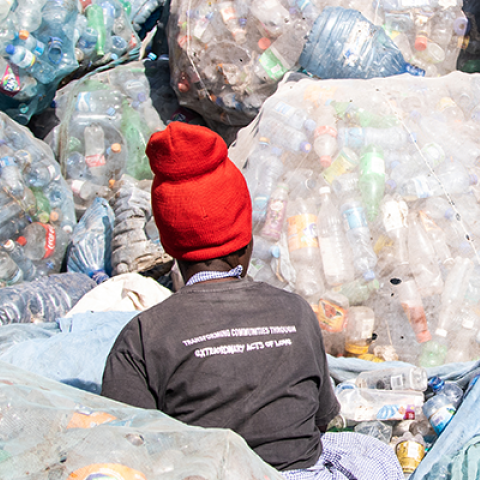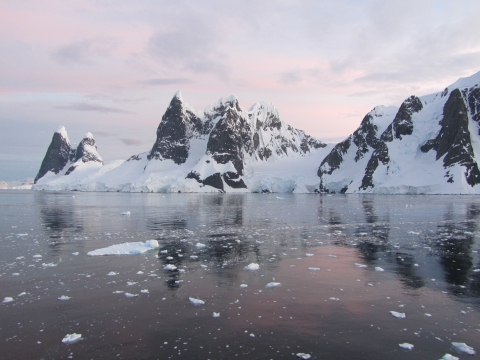

A Portsmouth scientist has returned from a once in a lifetime trip to Antarctica to research the impact of tourism in this remote part of the world.
Known for its inhospitable climate, incredible wildlife and vast expanse of untouched natural beauty, Antarctica is a top travel destination. But with over 100,000 tourists a year, is the area really as pristine as it might seem?
Fay Couceiro, Professor in Environmental Pollution and Lead of the Microplastics Research Group at the University of Portsmouth grasped a unique opportunity to go on a research trip to examine the impacts of tourism on this fragile ecosystem.
Here, Fay explains more about her fieldwork and experience in the frozen south.
Antarctica tales with Professor Fay Couceiro
A trip of a lifetime for Professor Fay Couceiro after she was invited to study pollution levels in Antarctica and how human activity has had an impact on the local environment. Fay was one of 12 researchers, and one of two from the University of Portsmouth, invited by the Royal Navy on board HMS Protector in December 2023.
Professor Fay Couceiro Travels to Antarctica
Professor Fay Couceiro [00:00:01] I love playing with all the equipment in the lab, but I really like getting outside and Environmental Pollution allowed me to do both. It allowed me to get out into the environment, to keep those areas that I enjoy using, rivers and the sea, clean, and I've always wanted to do polar work, but all my work so far has been temperate or tropical. And so when I had the opportunity to go to Antarctica and look at pollution levels, I jumped at it.
On screen text - In December 2023, Fay was invited by the Royal Navy to sail to Antarctica on board the HMS Protector as one of 12 researchers.
Professor Fay Couceiro [00:00:23] The first iceberg we saw was actually on quite a grey day. It was really far away, and all the people who were new to Antarctica were so excited. We all took 100 photos of the same iceberg getting slowly, slowly closer. And all the people who had been before just kept saying, "just wait". And as we then moved along and the days progressed, we just saw the more and more spectacular icebergs and of course the weather cleared up and they were beautiful colours as well. We were going through Lemaire channel, which is sometimes known as Kodak Valley because everyone takes so many pictures. And then we had humpback whales feeding right next to the ship as we went through the channel. And just... It was so peaceful. Everybody on the ship who wasn't working was outside watching it, and we were all silent because we were all awestruck. It was really quite a special moment.
On screen text – Despite being one of the most remote places in the world, over 100,000 people visited Antarctica in 2023.
Professor Fay Couceiro [00:01:19] The cruise ship industry has really taken off going towards Antarctica. So what I wanted to do was check what that meant for the water quality in the areas where there are regular visitors. And I looked for heavy metals, microplastics and antimicrobial resistance genes. These are all different ways that humans can impact the local environment. The next step is to actually analyse those samples. It's going to be at least six months or possibly longer before all of the analysis is finished. That data will then be shared both with the general public, the Navy, and also IAATO the International Association of Antarctic Tour Operators. Each of those people have a say in who can go to Antarctica and what policies they must follow whilst they're there. They can make the decisions about whether the number of cruise liners going is fine, whether they should decrease it, but also if there are any improvements that can be made to those ships. Small differences about how the water is released from those ships could make a big difference to the quality of the water in Antarctica.
On screen text – This Earth Day 2024, earthday.org is demanding a 60% reduction in the production of all plastics by 2040.
Professor Fay Couceiro [00:02:29] I guess what I want people to think about with microplastics is that they are reaching these areas that we have considered pristine, they have been found at the top of Everest and they have been found in Antarctica. So things that we are doing here in our homes are reaching all the way to the other side of the planet. Where possible, I think it's important for people to think about the impacts and to see what we can do to reduce the amount of plastic that we use as a whole, which will ultimately reduce the amount of microplastics produced.
A unique research trip with the Royal Navy
Each year the Royal Navy’s icebreaker, HMS Protector, embarks on a journey to Antarctica.
The former captain of the ship, Milly Ingham, is based in Portsmouth. She wanted to invite scientists on board and reached out to us at her local university. Captain Ingham was keen to involve scientists with relevant research in climate change and pollution.
I study man-made chemicals and particles that enter and disrupt the natural environment and I’ve always wanted to do polar work, so when the opportunity came along, I jumped at the chance. This trip allowed me to collect samples which could improve our understanding about the potential pollution caused by tourism in Antarctica. Glaciologist Dr Clare Boston also joined the expedition to gather data on how glaciers are being affected by climate change.
We joined HMS Protector in mid-December 2023 and lived alongside the crew for five weeks, travelling along the west coast of the Antarctic peninsula.
What were your highlights from your time in Antarctica?
It was an amazing experience. Firstly to appreciate the expanse and beauty of the place, and secondly to realise the importance of my research.
The first time we saw an iceberg was on a grey day and it was really far away. All those on board that were new to Antarctica were so excited. We took a hundred photos of the same iceberg getting gradually closer, while all the people who had been before said ‘just wait’. Of course, as the days progressed, we saw more and more spectacular icebergs. When the weather cleared, they were absolutely beautiful colours. I was very excited on seeing the first iceberg though — I still have that first photo; it's a great keepsake, and a memory of that feeling of excitement.
Another highlight was when we travelled through Lemaire channel, which is known as ‘Kodak Valley’ because everyone takes so many photos. We passed through in the evening, but because it was summer in Antarctica, the sun didn't set and just became low in the sky, giving a beautiful orange and pink glow. We saw humpback whales feeding beside the ship and it was so peaceful. Everyone who wasn’t working on the ship was outside watching. We were all silent because we were awestruck. It was really quite a special moment.
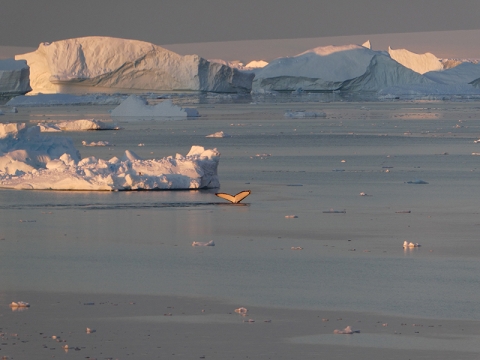
The white underside of the tail of a humpback whale catches the fading sunlight in Antarctica
Assessing the environmental impact of tourism in Antarctica
The main purpose of my research there was to study the impact of the tourism industry, which has grown in Antarctica in recent years.
Maritime traffic and tourism numbers are rapidly increasing in Antarctica. The cruise ship industry has really taken off. A record 105,331 people visited Antarctica during the 2022-23 season, travelling on one of up to 50 cruise ships a day, according to the International Association of Antarctica Tour Operators. In comparison, the number of visitors in 2010 was less than 15,000, so there has been a significant increase.
This trend is set to continue, and as the number of tourists increases, so too does their environmental footprint. On this trip, I took samples from places with high, medium and low visitations to assess the difference and what impact tourism could be having.
We tend to think of Antarctica as a pristine environment, but it may not remain that way if the number of tourists continues to rise. The only way to know the impacts is by regular monitoring of pollutant levels at multiple sites.
What do we know about microplastics in Antarctica?
Microplastics are reaching areas that we consider untouched by man. They have been found at the top of Mt Everest and in both the Arctic and Antarctic. Activities in our daily lives are reaching the other side of the planet. Microplastics can be carried by the air (e.g. tiny fragments that have come from littered plastics) or they can go into the sewers (e.g. washing plastic textiles such as polyester, in washing machines), and potentially our rivers and oceans.
We need to think about the impact of plastics. It's not just their environmental impact — microplastics can affect human health too. Recent research has found evidence of plastics in human blood, liver and heart. Plastics have even been found in the plaques in blood vessels, which can lead to further health problems such as a heart attack or stroke.
An area of interest for my research is microplastic fibres. Due to the cold temperature, you’re advised to wear polyester in Antarctica. Cotton will freeze and stick to your skin whereas polyester will wick away sweat and keep you warmer. This clothing needs to be washed. Ships, including cruise liners, are permitted to release grey wastewater while travelling in the polar regions, so there are potentially billions of fibres from plastic-based clothing being discharged into the Southern Ocean through tourism.
We need to establish the levels of synthetic fibres being discharged, and find solutions to reduce pollution. Interventions could be built into washing machines on board, or placed before grey water is discharged. There are multiple methods that could be tested for effectiveness, so new technologies do offer hope.
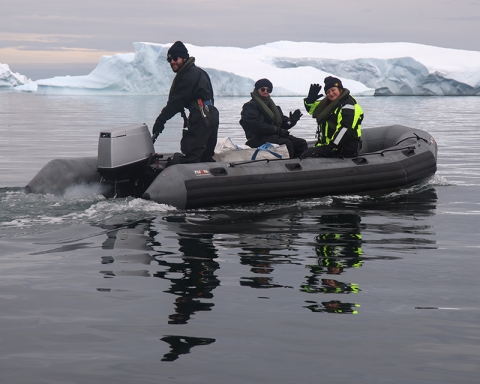
Prof Couceiro (in hi-vis jacket) heads out to collect samples. Photo © Gareth Smith, Royal Navy
How do you measure the impact of humans in remote regions?
I wanted to check what the increase of tourism means for the water quality in the areas where there are regular visitors. I looked for heavy metals, microplastics and antimicrobial resistance genes — each can impact the environment and changes in these can be attributed to humans.
HMS Protector has six smaller vessels on board. We used these small ribs to travel off the main ship, to the locations I wanted to gather water samples, such as a specific bay where we know that cruise liners regularly stop. There I collected water samples for metals and antimicrobial resistance genes, and towed a 32 micron plankton net through the water to collect microplastics. The sites I visited were Deception Island, Anvers Island, Port Lockroy, Detaille Island, Pourquoi Pas Island and Rothera Research Station.
I then took the water samples back to the ship where I stabilised them either through filtering, freezing or acidification so that they were ready to take back to the University of Portsmouth.
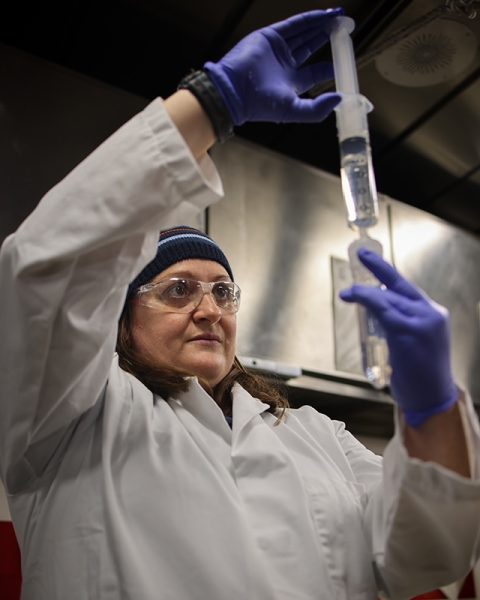
Processing the water samples on board HMS Protector. Photo © Gareth Smith, Royal Navy.
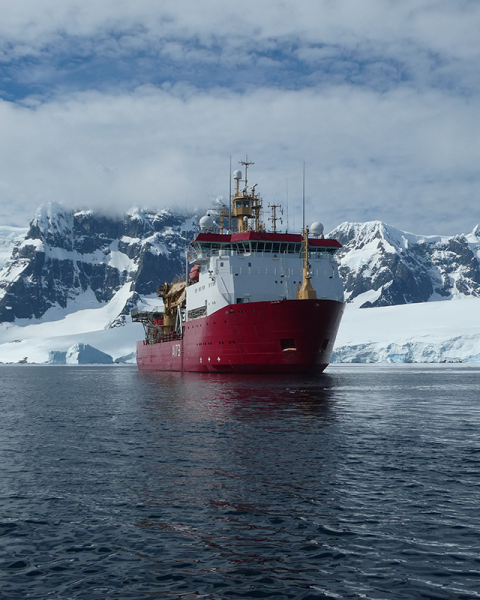
HMS Protector
How will the samples be tested?
Back in Portsmouth, my colleagues and I in Civil Engineering and Surveying and Biological Sciences will test the samples over the next six to twelve months. They will be processed with specialist equipment in the University’s lab and testing facilities. This will include:
- Inductively coupled plasma optical emissions spectroscopy (ICP-OES) to quantify metal concentrations, such as nickel and zinc.
- microRaman spectroscopy to analyse microplastics
- Polymerase chain reaction (PCR) analysis to determine antimicrobial resistance genes.
There’s lots of work to do in the lab, but when complete the data will be shared with the public, the Royal Navy and other interested groups.
What impact will the research have?
The research data will also be available to the International Association of Antarctica Tour Operators (IAATO) and Foreign, Commonwealth and Development Office (FCDO) — these organisations have a say in who can visit Antarctica and what policies they must follow when they are there.
We hope that these organisations will take an interest in our data and use it to understand how best to take policy forward. This could include decisions about whether there should be changes to the number of ships allowed to operate in the region. They can also assess if there are any improvements that can be made to ships, such as how grey wastewater is released, which could make a big difference to the water quality in Antarctica.
Additionally, sustainability-focussed tour operators might be interested in any solutions we devise, to reduce their own environmental impact.
Thank you to the Royal Navy for the opportunity and for supporting our scientists with their fieldwork.
More like this
Discover more news and blogs about the plastics research that takes place through the Revolution Plastics Institute, covering plastics policy, enzyme innovation and reducing environmental pollution.
Plant-based plastic releases nine times less microplastics than conventional plastic
A newly developed plant-based plastic material releases nine times less microplastics than conventional plastic when exposed to sunlight and seawater, a new study has found.
3 April 2024
5 min read
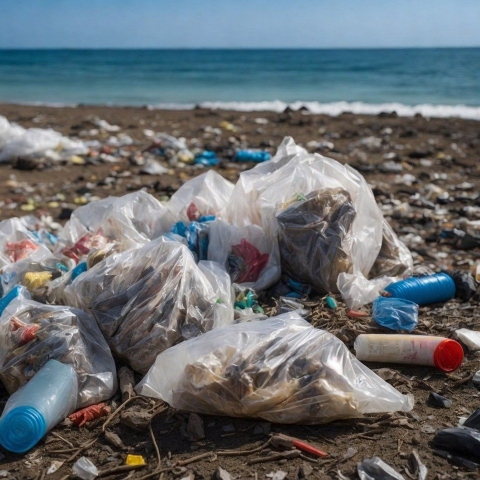
University to share in £100 million funding to lead major science and technology hub to reduce plastic waste
9 February 2024
4 minutes

West Africa’s plastic waste could be fuelling the economy instead of polluting the ocean: experts
20 November 2023
4 min read
